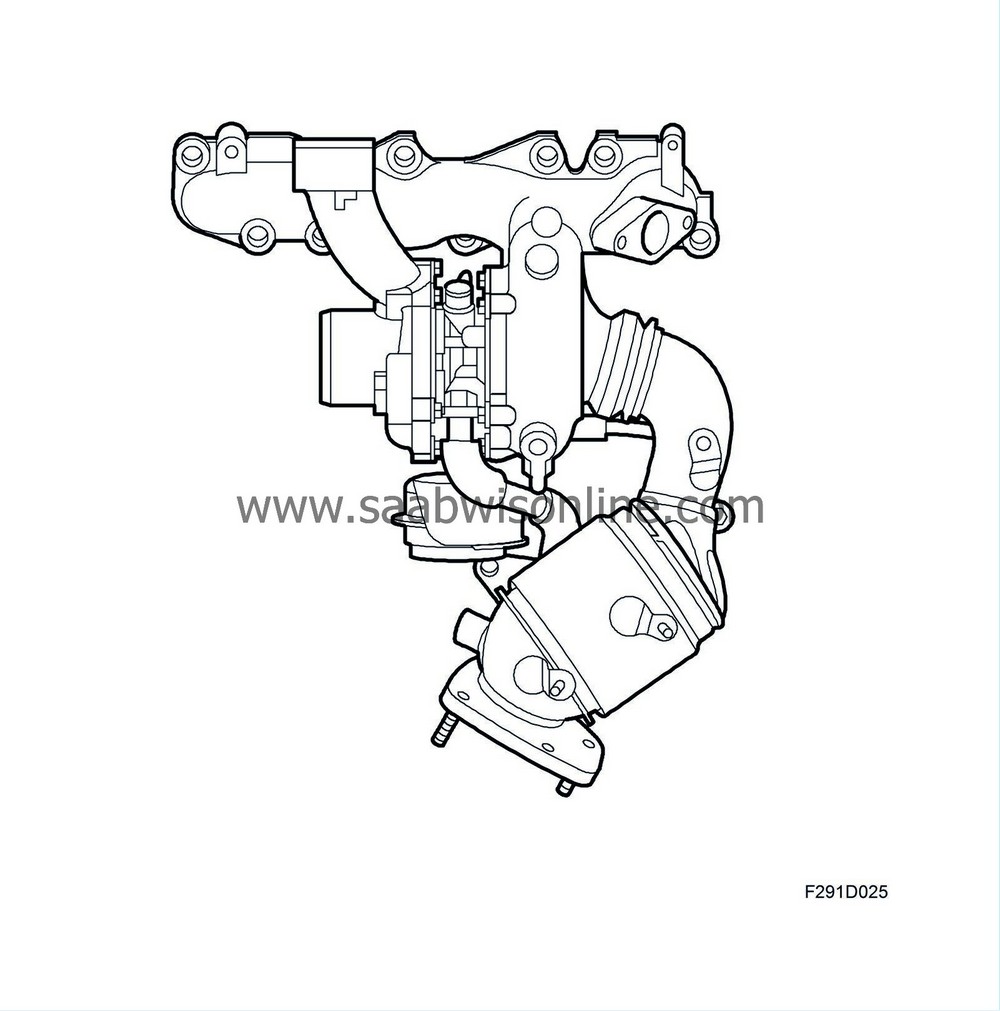Detailed description
| Detailed description |
Turbo control, general
The engine uses a VNT (Variable Nozzle Turbine) turbocharger. This means the turbine can be adjusted by changing the position of a number of vanes located in the exhaust flow just ahead of the turbine wheel. In this way, the turbine speed can be controlled so that the turbocharger provides the air mass required for the engine to deliver the desired torque with low emissions.If there are only low amounts of exhaust (light engine load/low engine speed), the vane opening will be relatively small. This gives a high speed to the flow of exhaust against the turbine wheel so that the speed of the turbine wheel is also relatively high. The turbocharger will then deliver a relatively large contribution, which in turn means that a larger amount of fuel can be injected to give a high engine torque.
The opening of the vanes must be regulated to suit the prevailing running conditions, however. As a rule, when the amount of exhaust increases (high engine speed/high engine load), the vanes will open up. Otherwise, the turbine speed would increase too much and damage the turbocharger and engine and the boost pressure would be too high with high turbine pressure. The turbocharger must therefore be regulated in order to suit the engine's air requirements for each particular situation. The vane opening is affected by a vacuum box controlled by ECM via a solenoid valve.
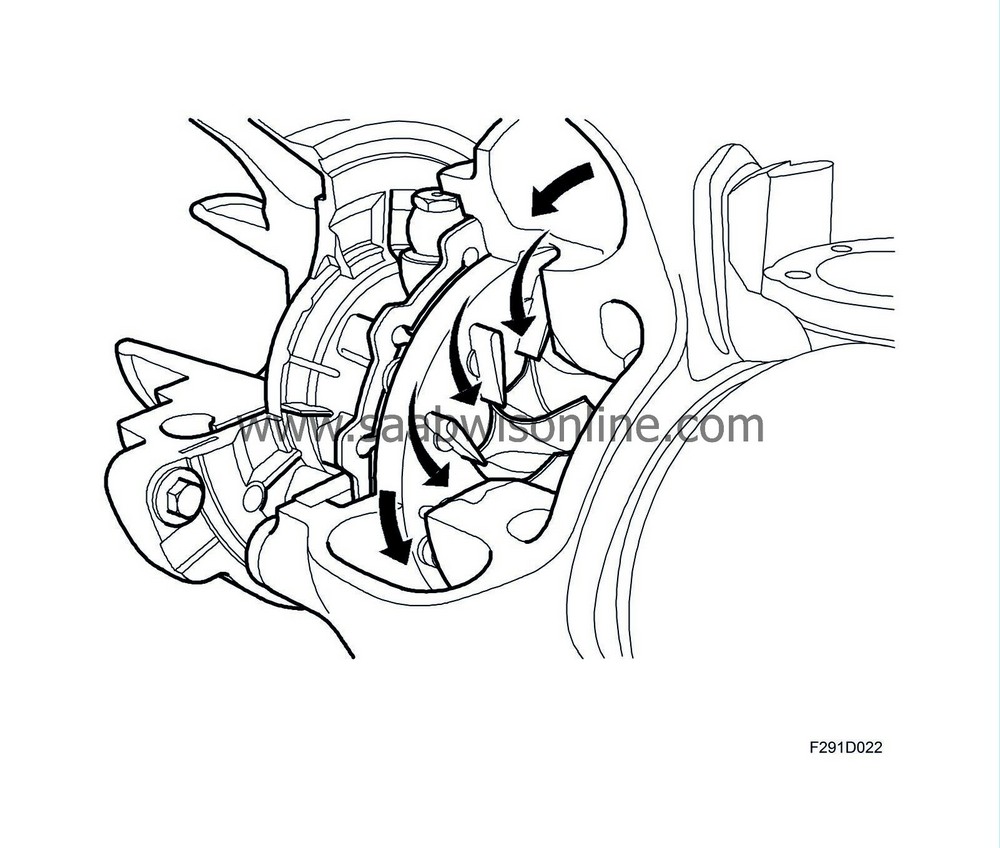
Vanes, closed position
For low exhaust flow (low engine speed / low engine load) the vane opening will be small. The speed of the exhaust gas and its angle to the turbine wheel is such that the turbine speed is high in relation to the amount of exhaust passing the turbine.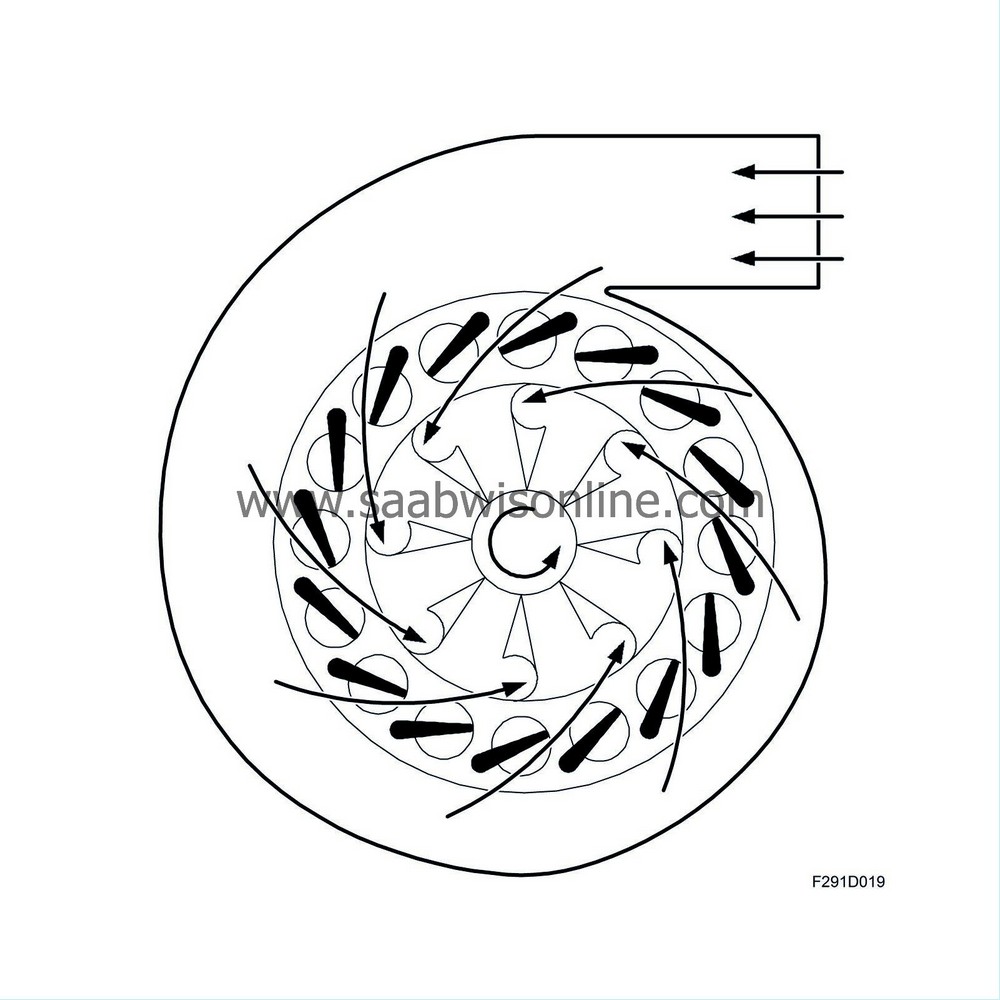
Vanes, open position
For high exhaust flow (high engine speed / high engine load) the vane opening is large. The speed of the exhaust gas and its angle to the turbine wheel is such that the turbine speed is low in relation to the amount of exhaust passing the turbine.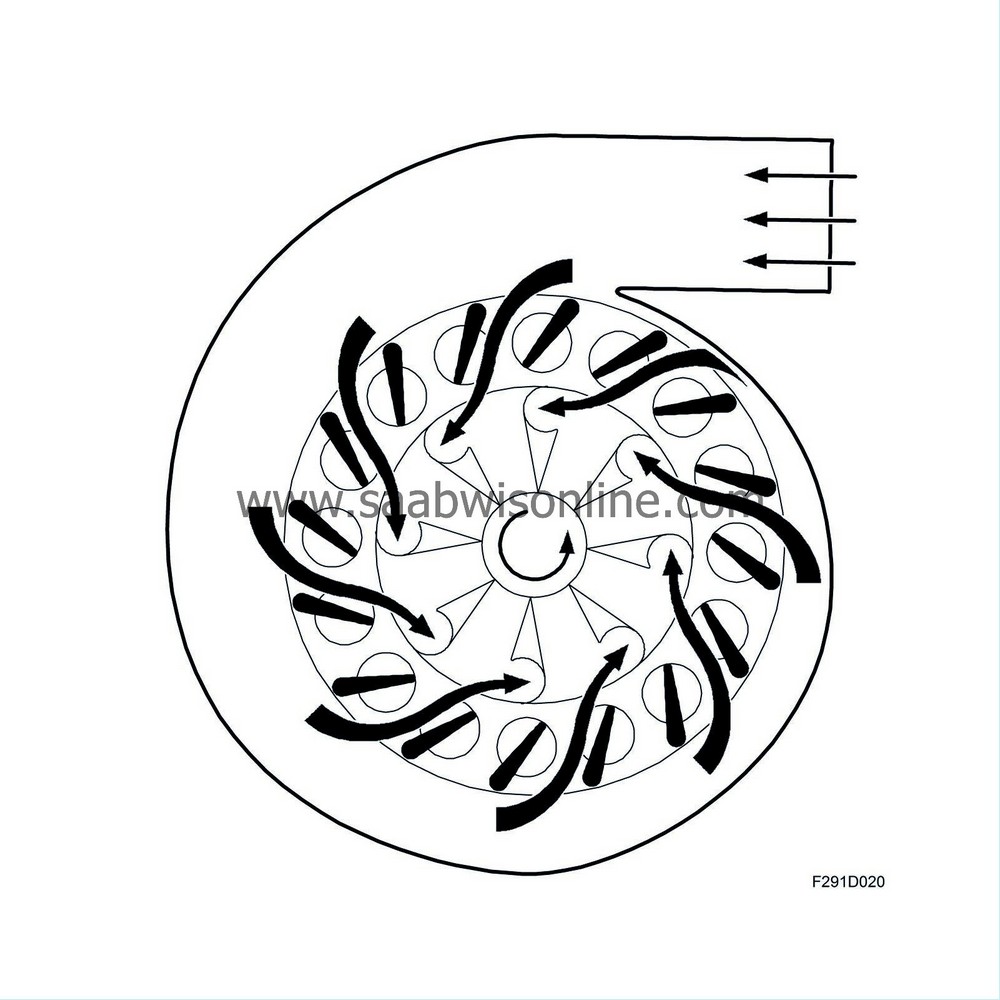
Diaphragm box, VNT
The diaphragm box is used to change the position of the vanes. It is controlled by vacuum from a vacuum tank via a solenoid valve. A coil spring in the diaphragm box keeps the vanes fully open whereas the vacuum acts in the opposite direction, i.e. closing the vanes. By controlling the vacuum to the diaphragm box, the position of the vanes can be varied. This is done with the help of a PWM controlled solenoid valve controlled by ECM.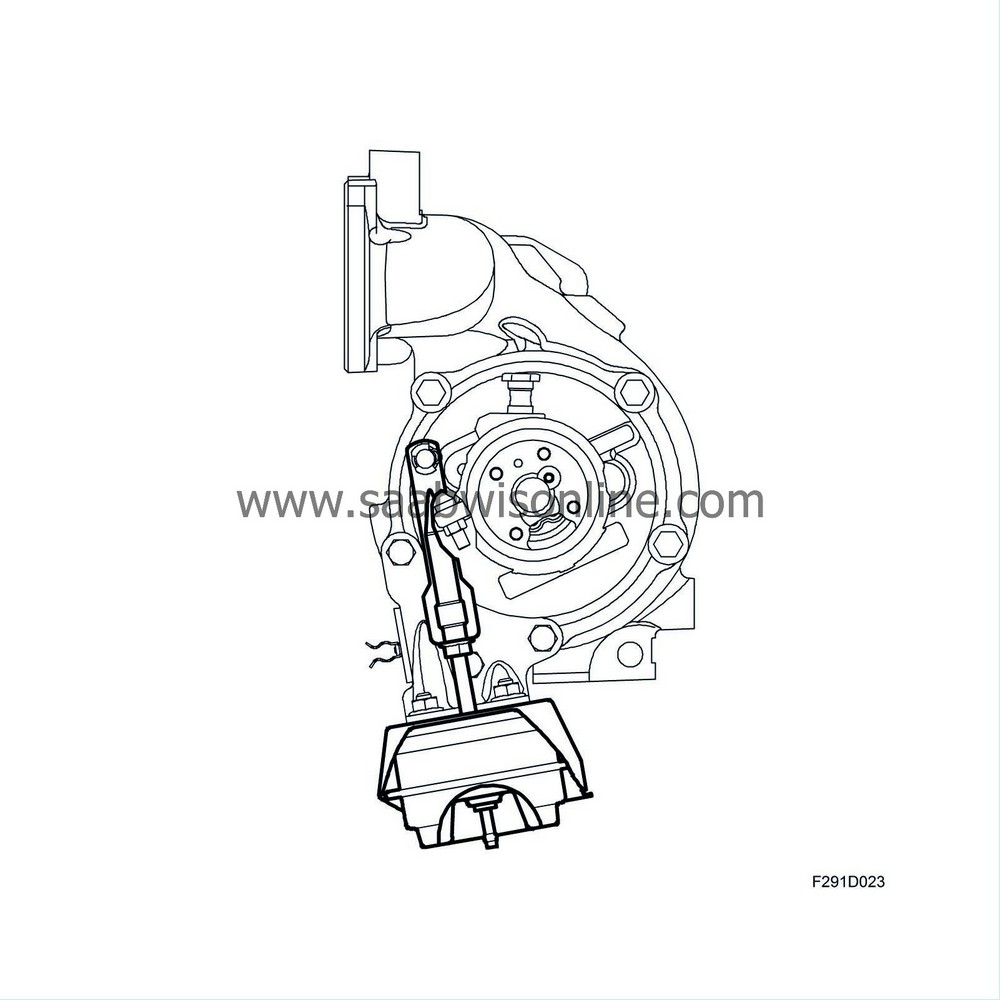
VNT solenoid valve
The solenoid valve is controlled by the engine control module via a PWM signal that opens the valve so that the desired vacuum is obtained to the diaphragm box. Through the combination of spring force in the diaphragm box and the vacuum, the vanes can be adjusted to any position between closed and open.
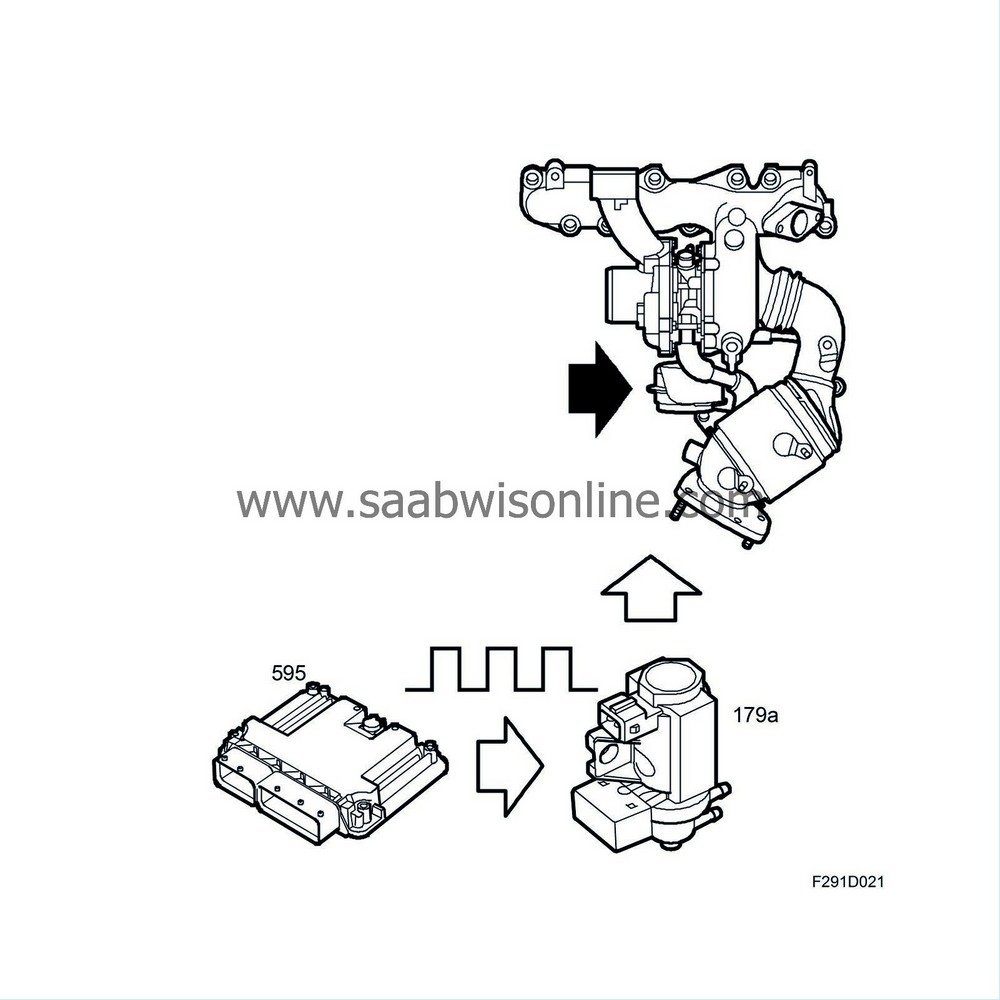
Lubrication
The turbine shaft rotates at a very high speed and is precisely balanced together with the turbine and compressor wheels. The shaft is supported in a fixed plain bearing bushing, which requires a large flow of oil through it so that the shaft is floating on a film of oil when it rotates. The oil comes from the engine's lubricating system through a special oil line. The return oil passes to the engine sump. The seal between the shaft and the bearing housing comprises rings similar to piston rings, which are located in a groove in the shaft.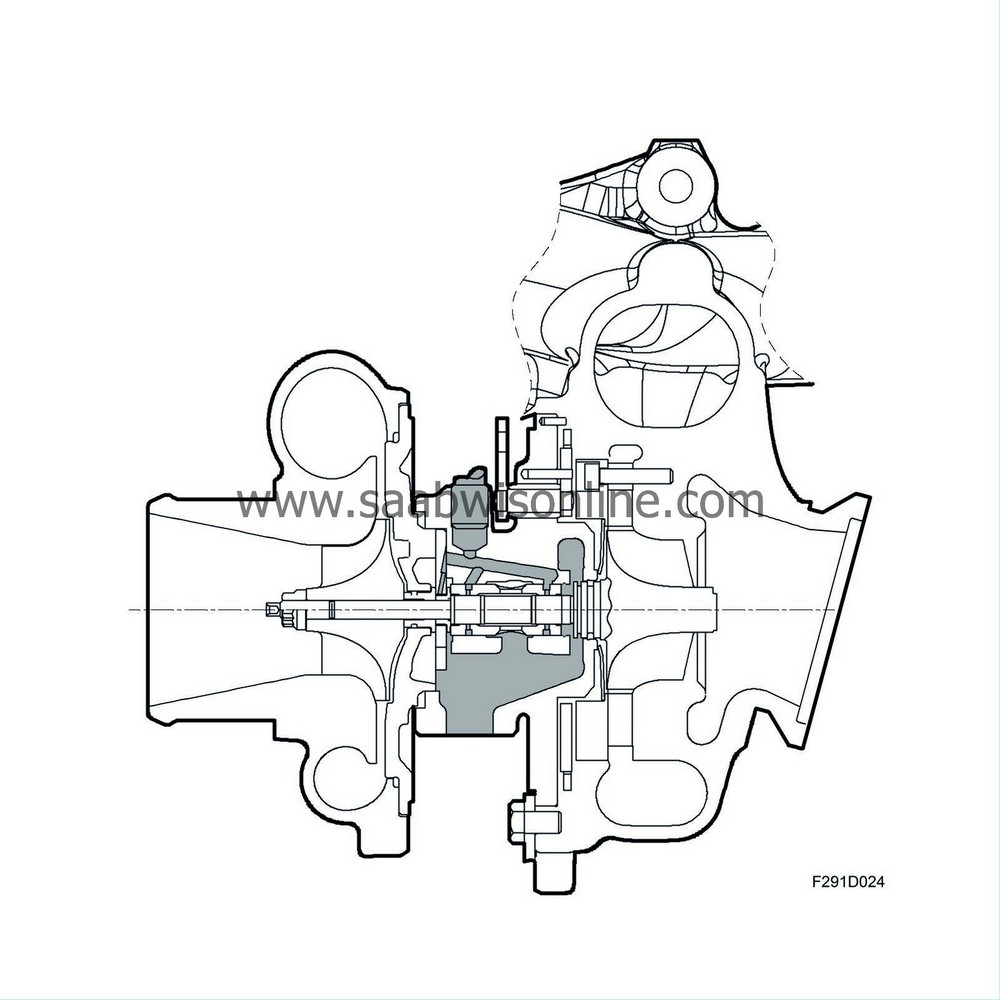
Exhaust manifold
The exhaust manifold is integrated in one unit with the turbine housing. There is an outlet for the EGR on the exhaust manifold.